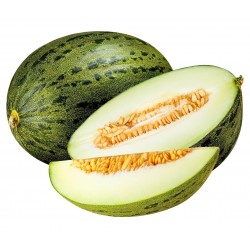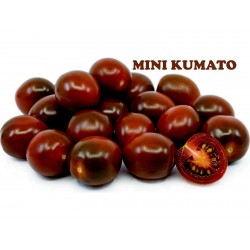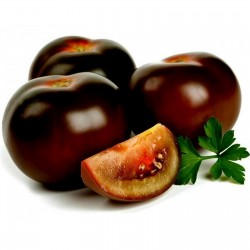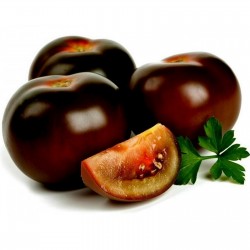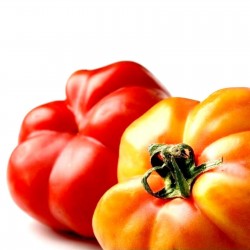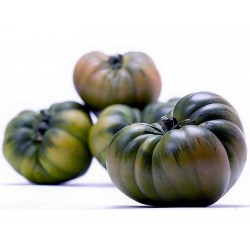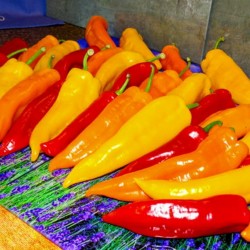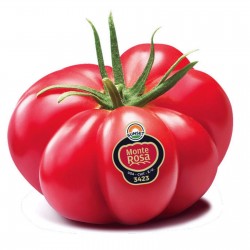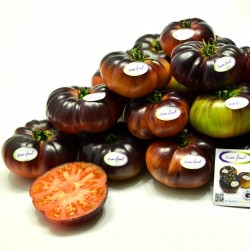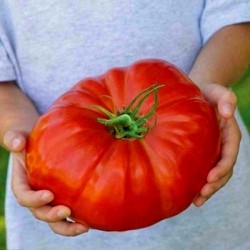
Variety from Spain
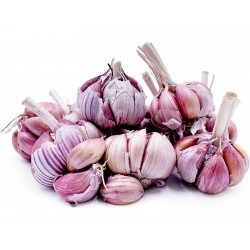
Spanish Roja Garlic
Price
€2.35
SKU: P 416 SRG
Seeds Gallery Com,
5/
5
<!DOCTYPE html>
<html>
<head>
<meta http-equiv="Content-Type" content="text/html; charset=UTF-8" />
</head>
<body>
<h2><strong>Spanish Roja Garlic Cloves</strong></h2>
<h2><span style="color: #ff0000;"><strong>Price for 10 Garlic cloves</strong></span></h2>
<p>Spanish Roja garlic is medium in size, averaging 5-7 centimeters in diameter with 8 to 9 cloves bound in a single layer around the scape. The outer wrappers are white, flaky, thin and peel easily. The inner clove wrappers range from tan to violet-blushed and encapsulate large ivory cloves that have a subtly sweet, hot, and robust flavor that lingers for a long time. When cooked, Spanish Roja garlic develops a deep, rich, and complex flavor.</p>
<p>Spanish Roja garlic, botanically classified as Allium sativum var. ophioscorodon, is a rocambole, which is the most common hard neck variety. Also known as Greek or Greek Blue garlic, Spanish Roja garlic is sometimes difficult to find, but is sought after for its superior flavor and is consistently ranked high in tastings among garlic connoisseurs and growers.</p>
<p>Spanish Roja garlic is an excellent source of vitamin B6, vitamin C, and manganese. It is also known for its allicin content which has anti-bacterial and anti-fungal properties.</p>
<p>Spanish Roja garlic can be used in both raw and cooked dishes. It is assertive and hot when raw so use sparingly. Chopping coarsely, mincing, and pureeing will release more of its oils providing a sharper flavor than slicing or leaving it whole. A popular raw method is to crush or mix the garlic with olive oil and lemon or with vinegar to create a vegetable and salad dressing. It can also be mixed with butter and brushed on to freshly cooked corn as a rich summer dish. For cooked applications, roast or sauté Spanish Roja garlic for a multidimensional and richer flavor experience. Complimentary pairings for Spanish Roja garlic include acidic fruits and vegetables, fresh herbs, cream, robust cheeses, olive oil, soy sauce, starchy pasta, grilled steak, roasted meats, and seafood. Spanish Roja garlic will keep up to five months when stored unpeeled in a cool and dry place.</p>
<p>Spanish Roja is listed on Slow Food USA's Ark of Taste, a catalog of important heirloom foods that works to raise awareness of their existence and encourage others to produce them. Spanish Roja is not endangered nor at risk, a common characteristic of items listed on the Ark of Taste, but it is listed because it is only produced on a small scale and is often overlooked. Spanish Roja is difficult to produce on a large scale due to its demand by hand-harvesting procedures and short shelf life. This prevents it from being distributed to large commercial retailers and centralizes it to remaining specialty garlic.</p>
<p>Spanish Roja garlic is an heirloom variety that is believed to have originated in Spain. Spanish Roja would eventually travel to the New World and become a true heirloom variety of North America. It was first cultivated in northwest Oregon in the late 1800s and then spread to Washington and other areas of the Pacific Northwest. Today, Spanish Roja is available in small quantities in home gardens and farmers' markets in the United States.</p>
</body>
</html>
P 416 SRG

- New




